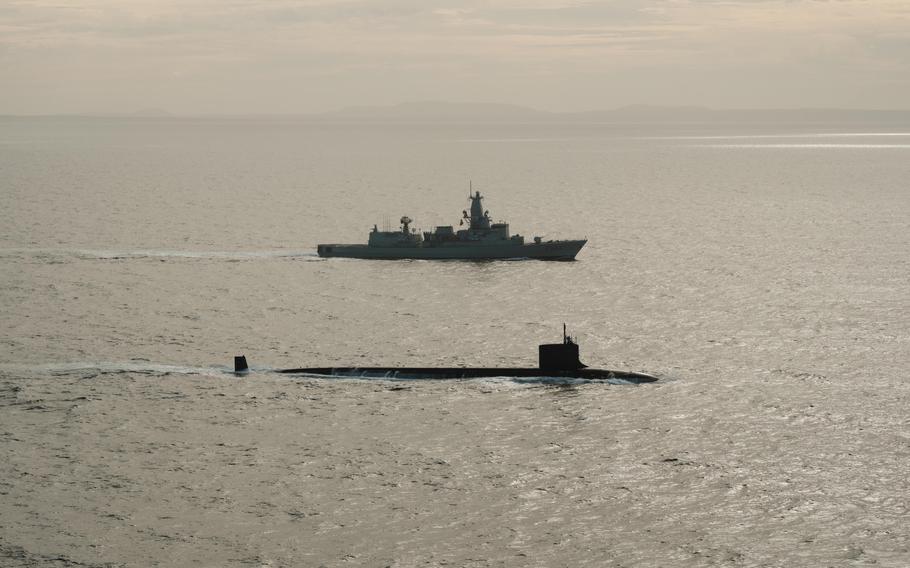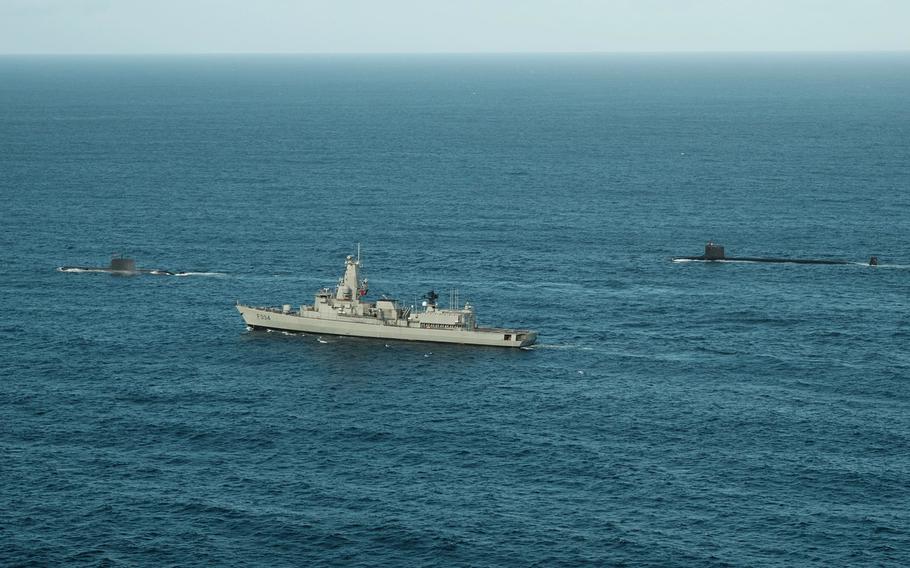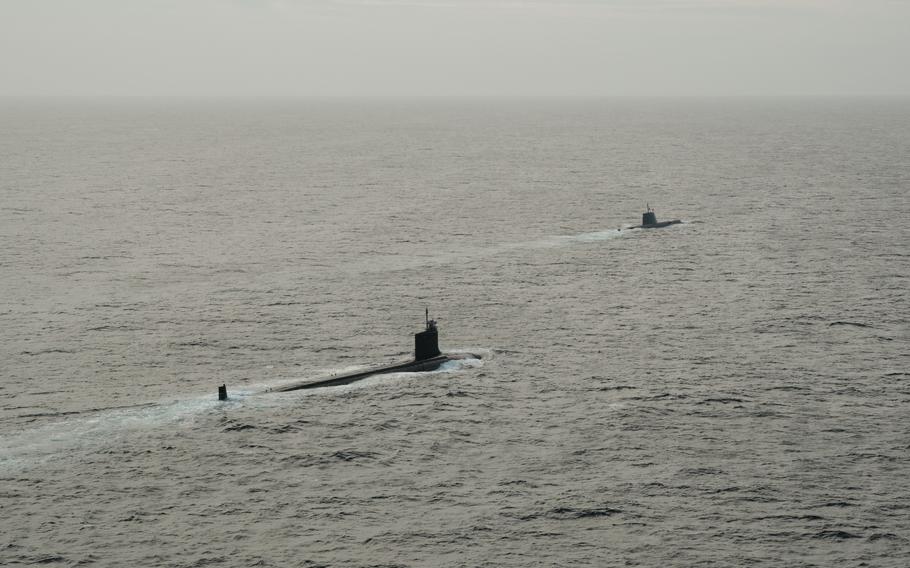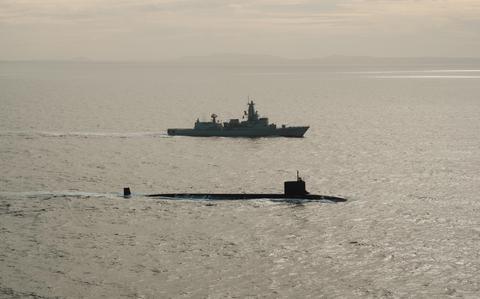
The submarine USS New Mexico sails with the Portuguese frigate Francisco de Almeida during a recent U.S.-Portuguese anti-submarine warfare exercise off the coast of Portugal. The submarine test-launched an aerial drone system during the exercise on Sept. 16, 2025. (Facebook/NATO Maritime Command)
NAPLES, Italy — An undersea test launch of an aerial drone from a U.S. vessel off the coast of Portugal this week is part of a NATO exercise aimed at revolutionizing anti-submarine warfare.
The fast-attack submarine USS New Mexico deployed the drone system Tuesday during REPMUS/Dynamic Messenger 25.
During the nearly two-week event, participants will experiment and train with more than 250 underwater, surface and aerial drone systems.
For example, New Mexico and the Portuguese submarine NRP Tridente trained and experimented alongside a Portuguese frigate and patrol boat, also on Tuesday.
The exercise also included the first-ever shift of operational control of a U.S. submarine to NATO’s submarine command, Capt. Ben Selph, commander of the Navy’s Task Force 69 based in Naples, said in a statement Friday.
The Navy and NATO are working quickly to integrate drones with submarines to transform anti-submarine warfare.

The Portuguese frigate Francisco de Almeida sails between the submarines Tridente and the USS New Mexico during a recent U.S.-Portuguese anti-submarine warfare exercise. (Facebook/NATO Maritime Command)
Drones can help improve a submarine’s ability to detect, identify and, potentially, engage with an adversary’s underwater vessel.
Aerial drones can help a submarine stay submerged while conducting intelligence, surveillance and reconnaissance operations, among other activities.
Those abilities could offer strategic advantages throughout the theater, particularly in the High North and Arctic, where Russia has a sizeable submarine presence.

The USS New Mexico, left, and the Portuguese navy’s Tridente sail in the Atlantic Ocean during a recent anti-submarine warfare exercise off the coast of Portugal. (Facebook/NATO Maritime Command)
REPMUS stands for robotic experimentation and prototyping with maritime unmanned systems. That exercise is combined with Dynamic Messenger, part of the alliance’s continuous operational experimentation initiative, NATO said.
The exercise, which started Monday, is a “demonstration of how the alliance can integrate submarines and unmanned platforms to achieve operational advantage,” Rear Adm. Bret Grabbe, NATO submarines commander, said in a statement Wednesday.
It includes more than 2,000 personnel from 22 countries including Canada, Denmark, Finland and Italy, along with 17 warships and two submarines.
Led by Allied Maritime Command, Dynamic Messenger consists of a series of experiments and demonstrations “aimed at accelerating new military technology,” NATO said.
REPMUS is a Portuguese-led exercise that focuses on maritime unmanned systems experimentation and capability development, among other objectives.
“To place these systems in the hands of our operators, who provide integral feedback to industry and our respective navies … further enables the spiral development and eventual fielding of cutting-edge technology for the Alliance,” Cmdr. Arlo Abrahamson, a spokesman for MARCOM, said in a statement Thursday.
